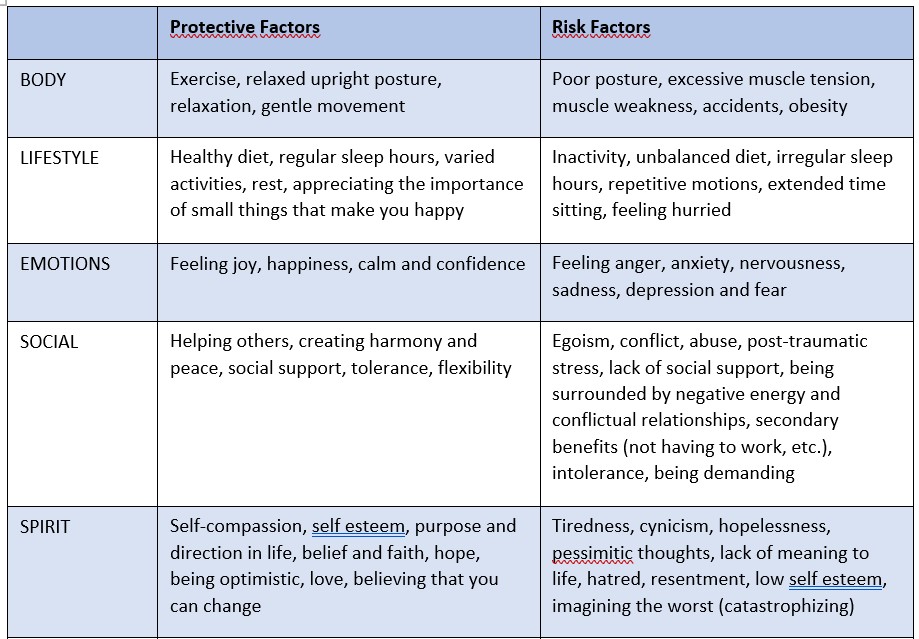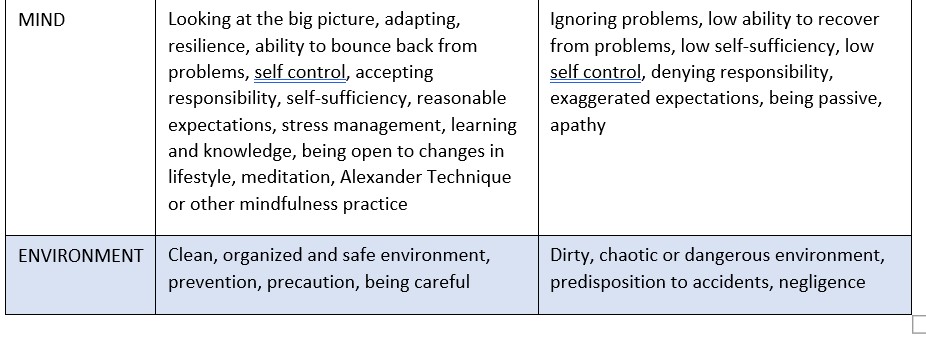Last week I wrote about how pain works and why it’s important to know about that. The more you know about how and why it works, the less of a mysterious, scary threat pain is. And that means your brain receives less information about “danger” in you, and as a result is less likely to protect you by giving you an experience of pain.
Our brains take in gazillions of pieces of information all the time. Some of it we perceive and others we don’t, but our brain weighs ALL the information it gets from ALL sources and decides if you are in danger and in need of protecting with your amazing pain alarm system. If your brain decides you are not in danger (or that not giving you an experience of pain is better for your survival), you won’t experience pain.
That’s a basic summary from last week’s article, but it bears repeating! (If none of that made sense, or if you missed it, you can read it here!)
So, you could have changes in your tissues as you age, such as degeneration of joints, for example, and not feel any pain! In fact, this is fairly common and normal. You could also have no damage in your tissues whatsoever and yet feel pain that is very real. That’s because many different factors contribute to that decision your brain makes (unconsciously, of course!).
Today I want to give you an idea of what information your brain uses to decide that you are in danger or that you are safe. We can call these “risk factors” and “protective factors.” Here are some in different areas of life. ALL of them can contribute to any experience of pain, in particular chronic pain.
(Click here to enlarge the chart or if you’re reading on your phone.)


Sources:
Explain Pain, 2nd Edition; Moseley and Butler. Noigroup Publications. 2013.
“Preventing Chronic Pain: A Human Systems Approach” Dr. James Fricton, University of Minnesota, 2017.
The more protective factors you have in your life, the less likely you are to experience pain, in particular chronic pain. The more risk factors you have, the more likely it is that your brain will decide you need protecting with pain.
Here’s a practice to begin increasing your protective factors right now: Constructive Rest. If you’ve never done it before or need a reminder, click on the link! (When you do Constructive Rest, you’ll be implementing a lot of those protective factors, like improved posture, relaxation, rest, appreciation, feeling calm, self-compassion, believing you can change, looking at the big picture, self-control, self-responsibility, stress management and embodied mindfulness.)
I am also offering two workshops coming up in Missoula where we will work on developing and putting into practice skills that help to manage pain: Sleep Better with Alexander Technique and Mind-Body Balance.
Wishing you health and wellbeing,
Mari
DiscoverEase in Movement


Recent Comments